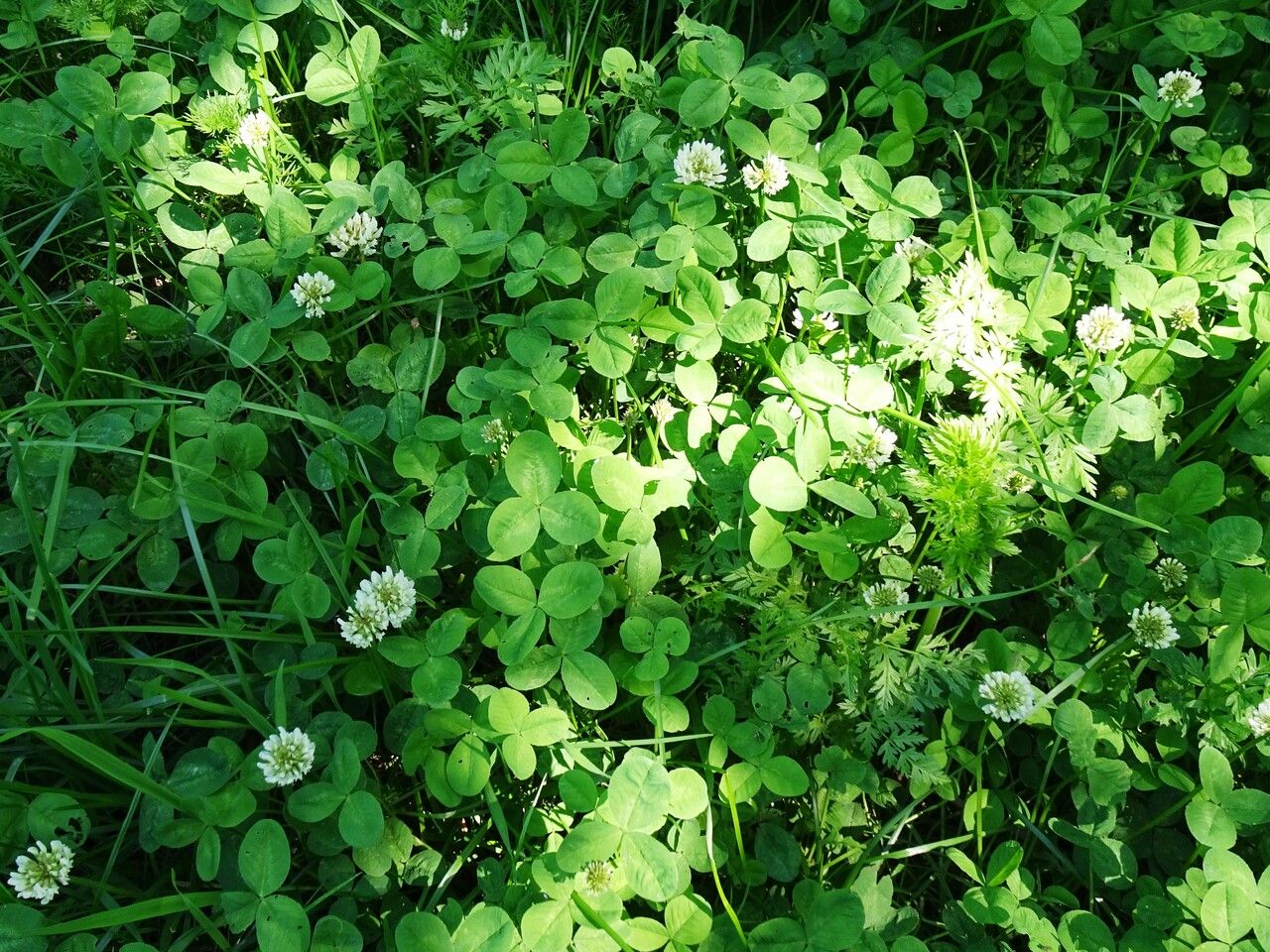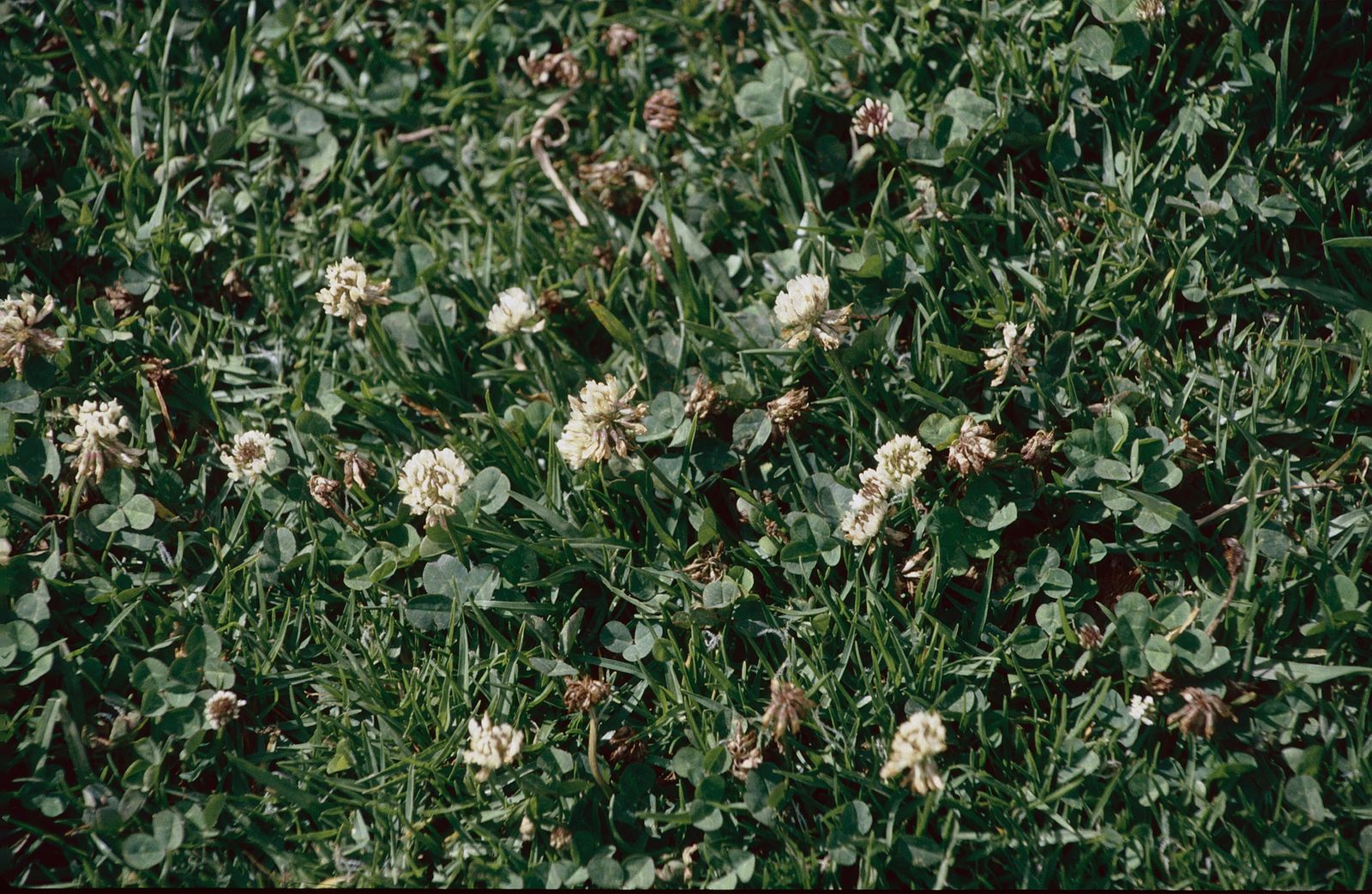White Clover
trifolium repens
Also known as: ["White Clover","Shamrock","Irish Clover"]
Overview
A low-growing, creeping perennial legume with three-lobed leaves and white, spherical flower heads.
Benefits & Perks
["disease resistant","deer resistant","pet-friendly","cold hardy","low maintenance","wildlife attractant (bees, butterflies, birds)","drought tolerant"]
Botanical Classification
| Phylum: | Magnoliophyta |
| Class: | Magnoliopsida |
| Order: | Fabales |
| Family: | Fabaceae |
| Genus: | Trifolium |
| Botanical Name: | Trifolium repens |
Plant Characteristics
Basic Information
- Category: Herbs & Weeds
- Suitable Location: ground cover in lawns, gardens, or as a living mulch
- Suitable For:
- Is Weed: No
- Allergenicity: low
Environmental Needs
- Climate: {"temperatureRange":"0–30°C"}
- Hardiness: {"zones":"3–9"}
- Misting: rarely required, only if ambient humidity is very low
- Drainage: Moderate drainage; avoid waterlogged conditions.
- Soil Type: Rich, loamy soil with good organic matter; tolerates poor soils but thrives in fertile conditions.
Maintenance Level
- Maintenance Level: very low
- Toughness Level: very high
- Pruning Frequency: As needed throughout the growing season; lightly prune after flowering.
- Pruning Intensity: Light pruning; focus on removing dead or overgrown parts.
Care Details
Ideal Sunlight Coverage:
Full sun to partial shade (4–6 hours of direct sunlight daily); tolerates light shade in hot climates.
Sunlight Tolerance Tips:
Acclimate plants gradually to direct sunlight; protect from intense midday sun in summer; adjust placement based on seasonal light intensity.
Care Requirements
Care Difficulty
very easyeasy
Sunlight
full sun to partial shade
Morning sun is ideal; provide shade during peak heat; rotate plants for even growth.
Watering
every 7–10 days during active growth, less frequently in winter
Water thoroughly but infrequently; ensure good drainage; avoid wetting foliage to prevent fungal diseases.
Soil
fertile, well-drained loam
pH: Slightly acidic to neutral (pH 6.0–7.0).
Ensure good drainage; enrich with organic matter; maintain consistent moisture.
Temperature
Prefers cool to moderate temperatures (60–75°F or 15–24°C); can tolerate light frost but avoid prolonged freezing.
Avoid sudden temperature changes; protect from frost; maintain consistent moisture in heat.
Fertilizing
every 4–6 weeks during spring and summer
Fertilize lightly in spring; avoid nitrogen-heavy fertilizers; water after fertilizing to prevent burn.
Propagation
Methods
Stem cuttings or division; easily propagated from runners in established patches.
Step-by-Step Propagation Guide
- Take cuttings from healthy stems.
- Remove lower leaves.
- Plant in moist medium.
- Keep warm and humid.
Best Time: Spring or early summer when growth is active.
Environment
Warm, humid conditions with indirect light; keep soil consistently moist.
Medium
Well-draining soil mix or perlite and peat moss.
Hormone
Not typically required but can help speed up rooting.
Timeline
Roots develop in 2–4 weeks; plants establish in 6–8 weeks.
Tools Needed
Pruning shears, rooting hormone (optional), small pots, misting spray bottle.
Quick Tips
Use healthy, non-flowering stems; keep cuttings out of direct sun; maintain humidity for faster rooting.
Pruning & Repotting
Pruning Guide
Method
Snip off dead or yellowing leaves; trim back runners to control spread.
Pruning Plan
Minimal pruning needed; remove dead or damaged foliage to encourage new growth.
Tools
Pruning shears, gloves.
Checklist
Wear gloves; sterilize tools; remove dead foliage; trim runners if necessary.
Repotting Guide
Best Season
Spring, before active growth begins.
Pot Size
One size up from the current pot; ensure good drainage holes.
Method
Gently remove the plant; trim any circling roots; repot in fresh, well-draining soil with a slightly larger pot.
Suggestions
Repot only if the plant becomes root-bound or outgrows its container; generally not required for ground-planted specimens.
Checklist
Choose a new pot; prepare fresh soil; handle roots gently; water after repotting.
Advanced Care Tips
Watering Mastery
Watering Checklist
Check soil moisture before watering; water deeply; ensure drainage; avoid overhead watering.
How to Apply Water Properly
Water at the base of the plant, targeting the root zone; apply until water begins to drain from the bottom; water early in the morning to minimize evaporation and fungal growth.
Watering Schedule Tips
Water deeply once the top inch of soil feels dry; reduce frequency in winter to prevent root rot.
Soil Improvement
Add compost or well-rotted manure; incorporate perlite for drainage; mulch to retain moisture.
Temperature Stress Management
Signs of Temperature Issues
Wilting, yellowing leaves, stunted growth, or browning leaf edges in extreme heat or cold.
Cold Stress
Slows growth, may cause leaf discoloration, and can lead to root damage in freezing conditions.
Solution: Mulch heavily in winter; protect from frost with row covers; avoid overwatering in cold weather.
Hot Stress
Leaves may scorch, wilt, or drop; growth may slow or stop in excessive heat.
Solution: Provide shade during peak heat; increase watering frequency; ensure good air circulation.
Fertilizing Guide
Fertilizing Checklist
Use balanced fertilizer; apply in spring; water after application; avoid over-fertilizing.
Fertilizing Method
Use a balanced, slow-release fertilizer in early spring; avoid over-fertilizing, which can damage roots.
Common Problems & Solutions
Toxicity Warning
Cats
Non-toxicTrifolium repens is not considered toxic to cats. It is not known to cause any adverse effects when ingested by cats in typical amounts.
⚡ Toxic If:
Generally non-toxic
Dogs
Non-toxicTrifolium repens is not considered toxic to dogs. It is commonly found in lawns and pastures where dogs may graze without adverse effects.
⚡ Toxic If:
Generally non-toxic
Humans
Non-toxicTrifolium repens, commonly known as white clover, is generally considered non-toxic to humans. It is often used as a forage crop and is safe for consumption in moderate quantities.
⚡ Toxic If:
Generally non-toxic
Frequently Asked Questions
Q: Is White Clover toxic to pets?
A: No, White Clover is non-toxic to dogs and cats.
Q: Does White Clover attract wildlife?
A: Yes, it attracts bees, butterflies, and birds.
Q: Is White Clover difficult to grow?
A: No, it is very easy to grow and requires minimal maintenance.
Quick Reference
| Family: | Fabaceae |
| Care: | very easy |
| Light: | full sun to partial shade |
| Water: | every 7–10 days during activ |
Get Expert Care Tips
Download the Plantious app for personalized care reminders and plant identification!
Google Play App Store








